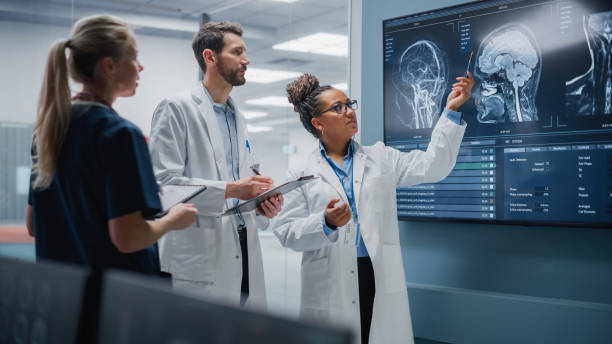Neurosurgery

What is a Neurosurgery?
Neurosurgery is surgery of the nervous system.
Most people think of neurosurgery as brain surgery — but it is much more!
It is the medical specialty concerned with the diagnosis and treatment of of patients with injury to, or diseases/disorders of the brain, spinal cord and spinal column, and peripheral nerves within all parts of the body. The specialty of neurosurgical care includes both adult and pediatric patients. Dependent upon the nature of the injury or disease a neurological surgeon may provide surgical and/or non-surgical care.
Who is a Neurosurgeon?
A physician who specializes in neurosurgery. Neurosurgeons are not just brain surgeons, they are medically trained neurosurgical specialists who can also help patients suffering from back and neck pain as well as a host of other illnesses ranging from trigeminal neuralgia to head injury and Parkinson’s disease.
Neurosurgery involves a wide range of procedures that target the brain, spinal cord, and other parts of the nervous system to treat injuries, disorders, and diseases. Some of the most common neurosurgical procedures include:
1. Craniotomy: This procedure involves the removal of a part of the skull to access the brain. It is used for treating brain tumors, hematomas (blood clots), aneurysms, and skull fractures.
2. Spinal Fusion: A surgery to join two or more vertebrae in the spine to stabilize it and reduce pain or correct deformities.
3. Laminectomy: Involves the removal of part of the vertebral bone called the lamina. This procedure is typically performed to relieve pressure on spinal nerves, which can help alleviate pain or weakness.
4. Microdiscectomy: Often performed for a herniated lumbar disc, this procedure involves the removal of small portions of the disc to relieve nerve compression.
5. Stereotactic Radiosurgery (SRS): A non-invasive method used to treat functional abnormalities and small tumors of the brain. It is not a surgery in the traditional sense, as it uses focused radiation to target affected areas precisely without needing incisions.
6. Ventriculoperitoneal Shunt: This involves the insertion of a shunt system to treat hydrocephalus, a condition in which excess cerebrospinal fluid accumulates within the brain’s ventricles, causing pressure.
7. Deep Brain Stimulation (DBS): This surgical procedure involves the implantation of a neurostimulator, which sends electrical impulses to specific parts of the brain. It’s commonly used for treating Parkinson’s disease, tremors, and dystonia.
8. Endovascular Coiling: A minimally invasive technique used to treat aneurysms in the brain by filling the aneurysm with coils that promote clotting and prevent rupture.
9. Chiari Decompression: A surgery to treat Chiari malformation, a condition where brain tissue extends into the spinal canal. It involves removing a small section of bone at the back of the skull to reduce pressure and create more space for the brain tissue.
10.Transsphenoidal Surgery: Typically used to remove pituitary tumors, this procedure involves accessing the pituitary gland through the nasal cavity and sphenoid sinus without an external incision.
Our trusted partners

Prof. DR. Hasan Caglar Ugur
Brain and nerve surgery specialist
I was born in 1972. I completed my primary, secondary and high school education in Hatay. I graduated from Çukurova University Faculty of Medicine, which I entered in 1988, in 1994.
After completing my compulsory service in Bor district of Niğde, I started specialization in Ankara University Faculty of Medicine, Department of Neurosurgery in 1995 and became a specialist in 2001. In the same year, he worked as a guest researcher in the Department of Molecular Biology and Genetics at Bilkent University, Prof.Dr. I carried out studies on brain tumors with Mehmet Öztürk.
In 2002, I started working as a specialist at Ankara University Faculty of Medicine. In the same year, I started my doctorate education at Ankara University Faculty of Medicine, Department of Anatomy, and completed it in 2005 and received the title of doctor of science.
Between 2005 and 2006, he worked as a Dr. at Harvard University Brigham Women’s and Children’s Hospital, Boston, MA / USA. I worked on projects related to the genetics of brain cancers in Peter Black’s laboratories and participated in intraoperative MRI surgeries.
I followed Dr Heros and Dr Marcos’ team at Miami Jackson Memorial hospital and completed the microsurgery course. Later, at the Hannover International Neurological Institute, Dr. I observed Sami’s surgeries.
I became an associate professor in 2008.
I became a professor in 2014.
I have 79 scientific articles published in international peer-reviewed journals.
I am married and the father of one child.
